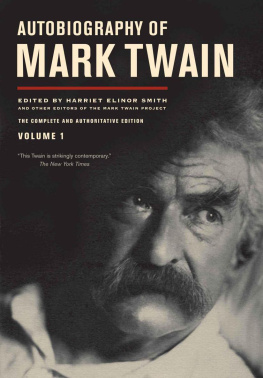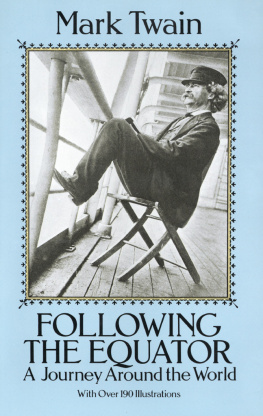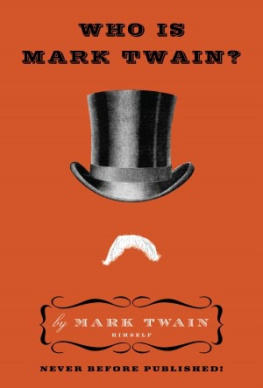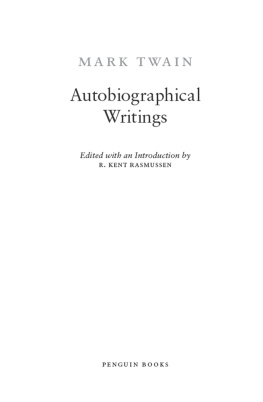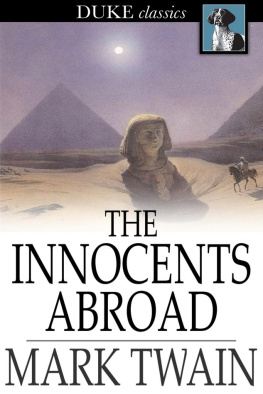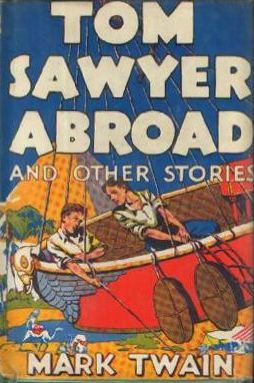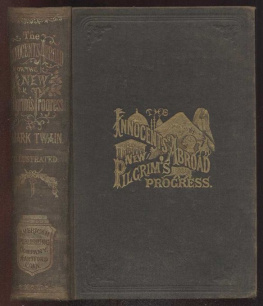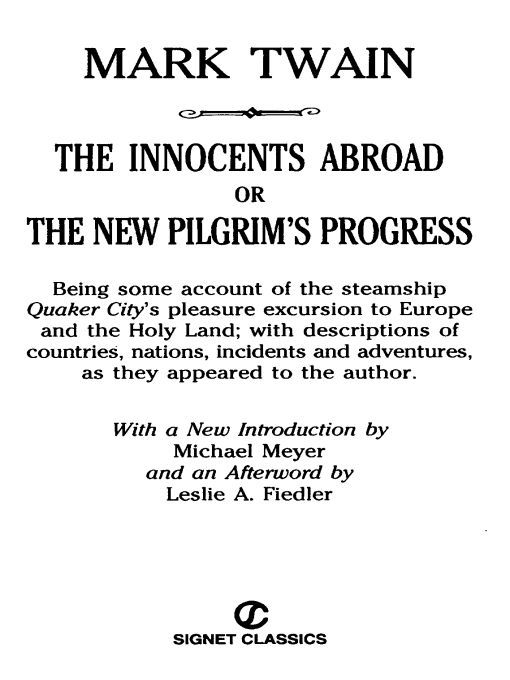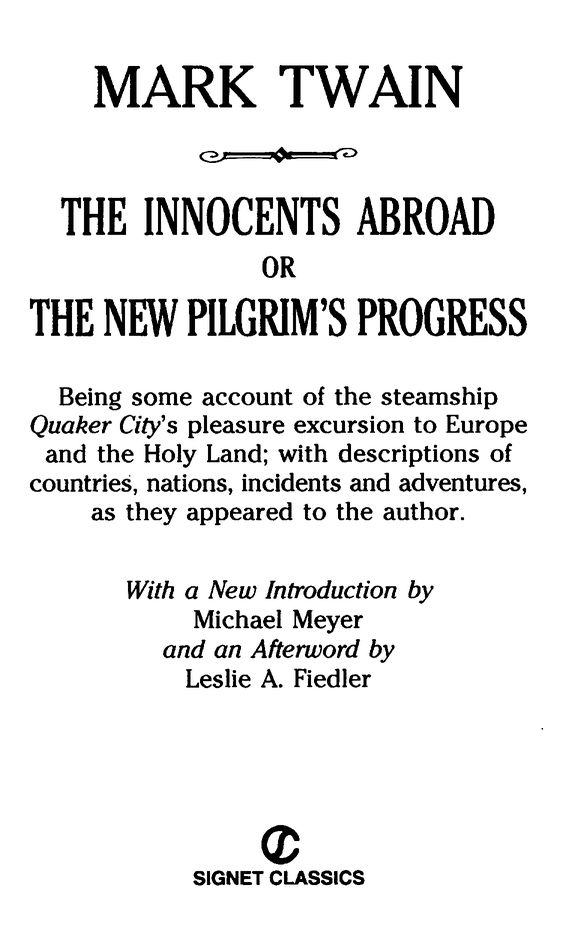Table of Contents
In his person and in his pursuits, Mark Twain (1835-1910) was a man of extraordinary contrasts. Although he left school at twelve, when his father died, he was eventually awarded honorary degrees from Yale University, the University of Missouri, and Oxford University. His career encompassed such varied occupations as printer, Mississippi riverboat pilot, journalist, travel writer, and publisher. He made fortunes from his writing, but toward the end of his life he had to resort to lecture tours to pay his debts. He was hot-tempered, profane, and sentimentaland also pessimistic, cynical, and tortured by self-doubt. His nostalgia for the past helped produce some of his best books. He lives in American letters as a great artist, the writer whom William Dean Howells called the Lincoln of our literature.
Michael Meyer, Ph.D., professor of English at the University of Connecticut, is a former president of the Thoreau Society and the coauthor of The New Thoreau Handbook, a standard reference. His first book, Several More Lives to Live: Thoreaus Political Reputation in America, was awarded the Ralph Henry Gabriel Prize by the American Studies Association. In addition to The Bedford Introduction to Literature, his edited volumes include Frederick Douglass: The Narrative and Selected Writings.
Leslie A. Fiedler (1917-2003) was a longtime professor of English at Montana State University and then the Samuel Langhorne Clemens Professor of Literature at the State University of New York at Buffalo. He was the author of four novels, as well as many influential works of criticism including Life and Death in the American Novel and What Was Literature? Class Culture and Mass Society. Among his many awards are the Modern Language Associations Hubbell Medal for lifetime contribution to the study of American literature.
TO
MY MOST PATIENT READER
AND
MOST CHARITABLE CRITIC,
My Aged Mother,
THIS VOLUME
IS AFFECTIONATELY
INSCRIBED
A Note on the Text
The Signet Classics text of The Innocents Abroad is reprinted from the first printing, which was published in 1869 by the American Publishing Company, Hartford, Connecticut. Spelling and punctuation have been brought into conformity with current American usage.
Introduction
Given Mark Twains enduring reputation since the last third of the nineteenth century, it may seem that he doesnt need an introduction. The image of his white hair, bushy mustache, and ever-present cigar are as well known as the titles to many of his books; indeed, in his own lifetime, he described himself as the most conspicuous person on the planet. Readers familiar with even just the titles of The Adventures of Tom Sawyer (1876), Life on the Mississippi (1883), and Adventures of Huckleberry Finn (1885) know that the river flows deeply in Twains writings, because his literary navigations of it buoyed his reputation, and because Samuel Langhorne Clemens fished from it his pen name, a riverboat term indicating two fathoms of safe water. Twains literary fame is further enhanced by historical romances such as The Prince and the Pauper (1882) and A Connecticut Yankee in King Arthurs Court (1889) along with darker works like The Tragedy of Puddnhead Wilson and the Comedy of Those Extraordinary Twins (1894) and the posthumous The Mysterious Stranger. What perhaps surprises readers today, however, is to learn that Twains first full-length narrative, The Innocents Abroad, or The New Pigrims Progress (1869), sold one hundred thousand copies within two years of its publication, making it the most popular and bestselling book that he published during his entire career as a writer.
The Innocents Abroad outsold every American literary book destined to be a classic in the mid-nineteenth century, including The Scarlet Letter, Moby-Dick, Walden, and Leaves of Grass. Only Harriet Beecher Stowes Uncle Toms Cabin surpassed its sales. It made Twains reputation at home and abroad. When he traveled to India in 1896 on a world lecture tour, the notice for his appearance at the Royal Theatre in Calcutta billed him as the Greatest Humorist of the Age, the Author of The Innocents Abroad. No other title was mentioned in the advertisement. By contrast, Twains reputation in the twenty-first century would be listing badly if all he had ever written was The Innocents Abroad, because there are many fewer readers of travel narratives now. In 1869, however, readers were happy to follow Twain in his literary excursions. Americans hadnt yet met Huck, Tom, and Jim, but they were delighted to see the world through the eyes of Mark Twain, who was fast becoming one of their favorite characters.
Although tourist travel increased significantly after the Civil War, Americans in the late 1860s were likely to be more engaged in reading about excursions abroad than in actually traveling. Twain capitalized on his fellow citizens itching desire to learn about the world after the Union was securely reestablished. It seemed to him as if [e]verybody was going to Europe on the tide of a great popular movement (p. 14), but precisely because he knew that relatively few Americans were actually making the trip, Twain understood that money and reputationalways high on his list of motivations for writingcould be gained by providing a homespun account of his travels. Newspapers were filled with roving reporters information, impressions, and insights for the folks back home about the cities of the East, territories of the West, or countries abroad. Aware that boatloads of middle-class Americans were eager to leave behind their provincialism, Twain shopped a ready market of readers thrilled to sojourn in guide books, vicariously experiencing remote and exotic destinations. Owing to his successful travel writings about Hawaii for the Sacramento Union in 1866, he secured a writing assignment from the San Francisco Alta Californian to record his experience on a five-month cruise beginning in June of 1867 aboard the very beautiful and substantial side-wheel steamship Quaker City (p. 11) to Europe and the Holy Land. The newspaper paid the high cost of the trip$1,250 trip plus expensesand turned Twain loose on the world.
The thirty-one-year-old Twain sailed with a genteel group of well-heeled, educated, pious Christians earnestly in search of their ancient spiritual roots, a sanctimonious congregation that he irreverently characterized as venerable fossil[s] (p. 18). For a native of Missouri who had worked as a printer and steamboat pilot, deserted the Confederate militia, prospected in the Nevada territory, kicked around San Francisco, and explored Hawaii, Twain found himself in mighty smothery company. I like those old people, he wrote, but somehow they all seem to have the Oh, my rather bad (p. 19). He curbed some of his drinking and smoking (later in his life, he claimed to smoke forty cigars a day, though he may have typically puffed the numbers), but he would not sheath his cutting humor or deny himself small pleasures, even if they were likely to give offense.
In rough seas on the first day of sailing, while his fellow passengers leaned over the deck rail seasick, Twain contentedly smoked a cigar and amused himself by carving the ships rail with a knife. The owner of the


